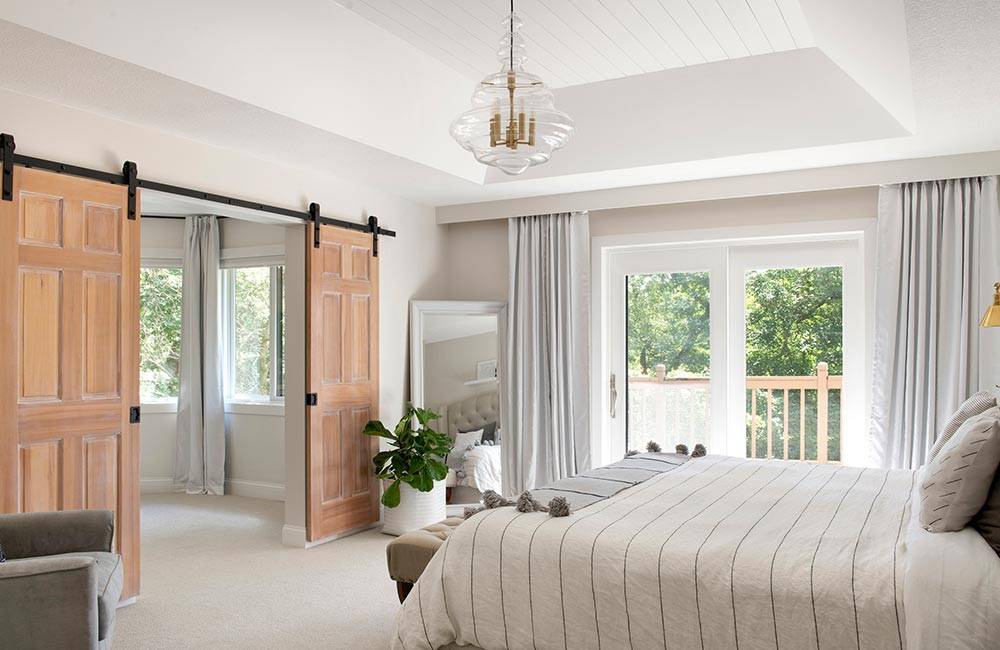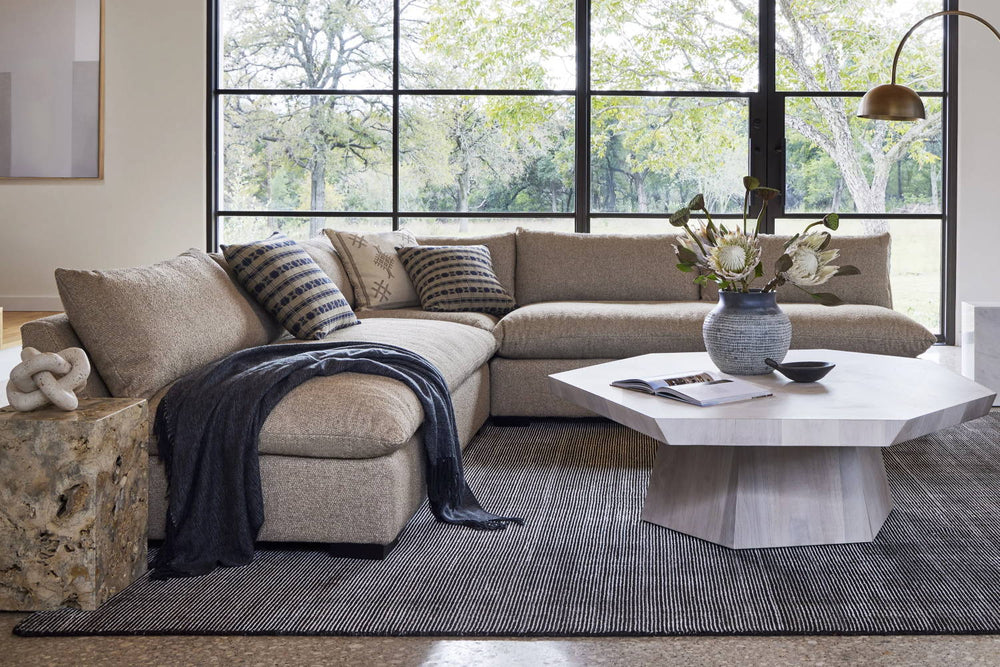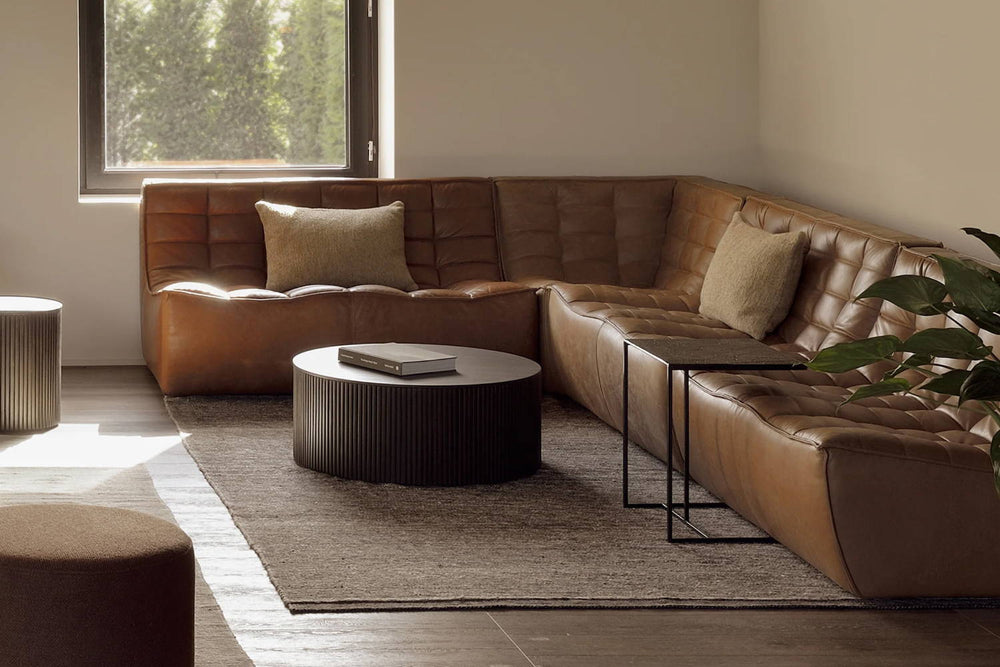Oranda Dining Table by Four Hands
When it comes to furnishing our homes, the choice of a modern dining table holds particular significance, as it serves as both a functional centerpiece and an aesthetic focal point. Among the options available, marble dining tables stand out for their timeless elegance, luxurious appeal, and versatility, able to be paired with any sort of modern dining chair. The question that often arises, however, is whether the allure of marble justifies the investment. Here, we’ll delve into the considerations surrounding marble dining tables, weighing factors such as aesthetics, durability, maintenance, and cost to determine whether the opulence of marble truly makes it a worthwhile addition to your dining space. Are marble dining tables worth the splurge, or are there practical and aesthetic compromises to be mindful of?
All Natural Dining Table by Caracole
Pros of Marble Dining Tables
Marble dining tables come with several advantages that contribute to their popularity among homeowners with discerning tastes. Here are some key pros of choosing a marble dining table:
- Elegant Aesthetic: Marble is renowned for its timeless and luxurious appearance. A marble dining table can instantly elevate the overall aesthetic of your dining space, adding a touch of sophistication and class
- Variety of Colors and Patterns: Marble is a natural stone that comes in a wide range of colors and unique veining patterns. This diversity allows you to select a table that complements your interior design and personal style
- Durable and Long-lasting: When properly cared for, marble is a durable material that can withstand the test of time. It is resistant to heat and provides a sturdy surface for dining activities
- Cool and Smooth Surface: Marble has a naturally cool surface, which can be a refreshing feature, especially in warmer climates. The smooth texture also adds to the overall tactile appeal
- Easy to Clean: Cleaning a marble dining table is relatively straightforward. Usually, a mild soap and water solution is sufficient for regular cleaning. However, it's essential to promptly clean up any spills to prevent staining
- Resistant to Moisture: Marble is less susceptible to moisture damage compared to some other materials. This makes it a suitable choice for a dining table where spills are inevitable
- Customizable Sizes and Shapes: Marble dining tables are available in various sizes and shapes, allowing for customization to fit different dining room layouts and accommodate varying numbers of people
While marble dining tables offer these advantages, it's important to consider individual preferences, lifestyle, and budget to ensure that this elegant choice aligns with your specific needs.
Lucy Round Dining Table by Four Hands
Cons of Marble Dining Tables
Despite the many advantages, marble dining tables also come with certain drawbacks and considerations that potential buyers should be aware of. Here are some cons associated with marble dining tables:
- Cost: Marble is a premium material, and furniture made from it tends to be more expensive compared to tables made from other materials such as metal or wood
- Heavy Weight: Marble is a dense and heavy material, making the tables cumbersome and difficult to move. Once placed, it's advisable to keep them in a fixed location to avoid the challenges of frequent repositioning
- Prone to Scratching: Despite being durable, marble is susceptible to scratches and nicks. Care must be taken to use coasters, placemats, and avoid dragging heavy or sharp objects across the surface
- Staining Risk: Marble is porous, which makes it susceptible to staining. Spills of acidic substances like wine or citrus juices can cause permanent discoloration if not cleaned promptly. Sealing the marble can help mitigate this risk
- Maintenance Requirements: Marble requires regular maintenance to preserve its appearance. It needs to be sealed periodically to protect against stains, and extra care is necessary to prevent scratches and damage
- Limited Impact Resistance: While marble is durable, it is not as impact-resistant as some other materials. Dropping heavy objects on the table can result in chipping or cracking
- Susceptible to Etching: Marble is sensitive to acidic substances, and contact with acidic foods or cleaning products can cause etching, which manifests as dull spots on the surface
Considering these cons, it's essential to weigh the aesthetic appeal and luxurious qualities of marble against the practical considerations and potential maintenance requirements. Whether a marble dining table is worth it depends on your lifestyle, preferences, and willingness to invest time and effort in its upkeep.
Harbour Column Round Dining Table by Audo Copenhagen
Tips for Maintaining Marble Dining Tables
Proper maintenance is crucial to preserve the beauty and longevity of marble dining tables. Here are some tips to help you care for and maintain your marble table:
- Sealing: Marble is porous and can be susceptible to stains. It's recommended to apply a high-quality sealer to the surface periodically. Sealing helps create a protective barrier against liquids and makes it easier to clean up spills before they can penetrate the stone
- Clean Spills Promptly: Wipe up spills as soon as they occur to prevent liquids, especially acidic ones like wine or citrus juices, from causing stains or etching on the marble surface. Use a soft, damp cloth or sponge for cleaning
- Avoid Harsh Cleaners: Refrain from using abrasive or acidic cleaning products, as they can damage the marble. Stick to mild, pH-neutral cleansers or a mixture of mild dish soap and water for regular cleaning
- Use Coasters and Placemats: Place coasters under glasses and cups to prevent water rings, and use placemats for hot dishes or plates with rough undersides. This helps protect the marble from scratches, heat, and potential stains
- Regular Dusting: Dust the surface regularly using a soft, dry cloth. This helps prevent the accumulation of debris and reduces the risk of scratches
- Avoid Dragging Heavy Objects: Lift and place objects on the table rather than dragging them, as dragging heavy items can scratch the surface of the marble
- Protect Against Scratches: Place protective pads or felt under decorative items or tableware to avoid scratches. This is particularly important for items that may have abrasive or rough bases
- Regularly Clean the Entire Surface: Even if there are no visible spills, it's a good practice to clean the entire surface regularly. This helps prevent the gradual build-up of dirt and grime
- Professional Polishing: Consider professional polishing every few years to restore the shine and luster of the marble. This process can help remove surface scratches and imperfections
By following these maintenance tips, you can keep your marble dining table looking beautiful and well-preserved over the years. Keep in mind that the specific care requirements may vary based on the type of marble and finish, so it's always advisable to follow the manufacturer's guidelines.
Amber Lewis x Four Hands Figueroa Dining Table by Four Hands
The decision on whether marble dining tables are worth the investment depends on a combination of personal preferences, lifestyle considerations, and budget constraints. The allure of marble lies in its timeless elegance, luxurious aesthetics, and the potential to elevate the ambiance of your dining space. Ultimately, the worthiness of a marble dining table is subjective and contingent on how well its qualities align with your lifestyle and preferences. Taking into account the pros and cons discussed, make an informed decision that ensures your dining table not only enhances your living space aesthetically but also aligns with your practical requirements and long-term satisfaction.








